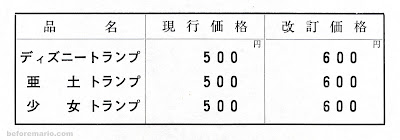Nintendo has produced games since its inception in 1889 up to the present day, and we are used to associating them with leisure products that provide entertainment, some education, but mostly innocent excitement and fun. These products are typically devoid of religion, politics, or any belief system, which has contributed to Nintendo's eventual global appeal, crossing borders and cultures.
In today's post, we will take a look at a notable exception to this 'neutral' position: two games that played a role in Japanese government propaganda during the Second World War (1939-1945).
The expansionist policies and military actions of Japan in Asia and the Pacific started in 1931 with the invasion of Manchuria, a region in northeastern China. This was followed by the Second Sino-Japanese War (1937), the Japanese occupation of French Indochina (1940), and the full outbreak of the Second World War in Asia and the Pacific in December 1941 after the surprise attack by the Japanese on the United States naval base at Pearl Harbor in Hawaii.
By December 1942, when the first of these games was published, Japan was a year into a broad and bloody world war affecting millions of people across a large area in Asia and the Pacific. Together with its Axis alliance partners, Germany and Italy, Japan was fighting the Allied forces comprising the United States, the United Kingdom, Australia, China, New Zealand, Canada, the Netherlands, India and others.
At this time, the general public back home in Japan was enduring significant hardships due to the ongoing war. The economy was under strain, resources were scarce, and daily life was marked by sacrifices and increased militarization. Although the realities of the war's demands and the early signs of Japan's strategic difficulties, including air raids over Japan, were beginning to affect the population's outlook and daily experienc, propaganda efforts maintained a degree of public morale and support.
In this context, Nintendo and other card manufacturers contributed to such propaganda efforts, either voluntarily or through governmental and societal pressure, by producing so-called Aikoku Hyakunin Isshu (愛國百人一首) games: "One Hundred Patriotic Poems by One Hundred Poets".
 |
Two Nintendo Patriotic cards sets (left and middle) from 1942-'43
and a 1943 book (right) covering the 100 poems included in these games |
The Aikoku Hyakunin Isshu game is similar to the well-known Japanese card game Ogura Hyakunin Isshu (小倉百人一首), often shortened to just Hyakunin Isshu, which translates to "One Hundred Poems by One Hundred Poets."
The difference between Aikoku Hyakunin Isshu and Ogura Hyakunin Isshu is the "patriotic" part.
The Ogura Hyukunin Isshu game is based on a 12th-century anthology of one hundred poems (by one hundred different poets), compiled by Fujiwara no Teika (藤原定家), covering a wide range of subjects and styles. This anthology was intended to be a masterclass in poetry in general.
On the other hand, the Aikoku Hyakunin Isshu consists of one hundred poems (again by one hundred poets) selected specifically to promote nationalism and patriotism in Japan; they were intended to foster a sense of national pride and loyalty to the emperor.
 |
| Nintendo Aikoku Hyakunin Isshu (愛國百人一首) card set from December 1942 |
Apparently, in 1942, the Japanese public was asked to submit candidates for the set of Aikoku Hyakunin Isshu poems, from which a committee of well-known literary scholars, including Nobutsuna Sasaki (佐佐木信綱), selected the final set of one hundred. These were sanctioned by the Japanese government, more specifically, the Information Bureau (情報局), which can be seen as a (war-time) Ministry of Information and Propaganda.
The poems deal with the following topics:
- Nationalism and Patriotism
- Loyalty to the Emperor
- Sacrifice and Duty
- Military Valor and Honor
- Unity and Collective Effort
- Resistance Against Western Influence
- Historical and Mythological References
It is important to note that these poems were not originally written with propaganda in mind, as they all predate the Japanese period of military expansionist ambition. It is the specific selection and combination of these poems, and the way they were positioned and used, that turned them into a tool for propaganda.
This list of one hundred poems was printed in Japanese newspapers, published in books, and used as the basis for the Aikoku Hyakunin Isshu card game produced (in different forms) by a number of different card manufacturers. Here we see the versions made by Nintendo.





















































